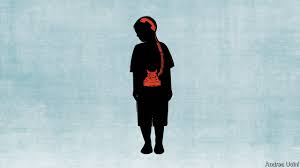Paradigm shift is an overused term. Properly, it refers to a radical change of perspective on a topic,
范式轉換是一個被過度使用的術語。準確的是,它指的是對一個話題觀點的徹底改變,
such as the move from the physics of Newton to the physics of Einstein, or the introduction of plate tectonics into geology.
比如從牛頓物理學轉變到愛因斯坦物理學,或是將板塊構造學引入到地質學。
Such things are rare. Something which history may come to regard as a true paradigm shift does,
這種轉變很少見。但歷史上可能認為屬于真正的范式轉換的事情
however, seem to be going on at the moment in medicine.
似乎此刻正發生在醫學領域。
This is a recognition that the zillions of apparently non-pathogenic bacteria on and in human bodies,
這是一種認識,即人體和體內有著無數非致病菌,
hitherto largely ignored, are actually important for people's health.
迄今為止這一點被很大程度的忽略了,這些病菌對人類健康非常重要。
They may even help to explain the development of some mysterious conditions.
它們甚至可能有助于解釋一些神秘疾病的形成。
One such condition is autism—these days often called autism-spectrum disorder (ASD).
其中之一就是孤獨癥—如今經常被稱為自閉癥譜系障礙(ASD)。
ASD is characterised by repetitive, stereotypical and often restricted behaviour such as head-nodding,
ASD的特征是重復的、刻板的以及經常性的限制行為,如點頭,
and by the difficulties those with it have in reading the emotions of, and communicating with, other people.
患者有無法讀懂別人情緒以及和他人溝通的困難。
These symptoms are noticeable in children from the age of two onwards. Currently, in America, about one child in 59 is diagnosed with ASD.
這些癥狀在兩歲以上的兒童中很明顯。目前,在美國約每59個孩子中就有一個被診斷為ASD。

What causes ASD has baffled psychiatrists and neurologists
自20世紀中期,漢斯·阿斯伯格和利奧·坎納首次對這種綜合癥狀進行描述以來,
since the syndrome was first described, in the mid-20th century, by Hans Asperger and Leo Kanner.
ASD的病因就一直困擾著精神病學家和神經學家。
But the evidence is pointing towards the bacteria of the gut.
但證據正指向腸道細菌。
That suggestion has been reinforced by two recently published studies—one on human beings and one on laboratory rodents.
最近發表的兩項研究進一步證實了這一觀點—一項是針對人類,另一項是針對嚙齒類實驗動物。
The human study, the latest results of which came out a few weeks ago in Scientific Reports,
人類研究,其最新結果幾周前發表在《科學報告》上
is being conducted by Rosa Krajmalnik-Brown of Arizona State University and her associates.
由亞利桑那州立大學的Rosa Krajmalnik-Brown及其合作人共同進行。
It was prompted by earlier work in which Dr Krajmalnik-Brown and James Adams, a colleague at Arizona State,
該研究由Krajmalnik-Brown和一位亞利桑那州同事James Adams的早期作品促成,
sequenced the DNA of gut bacteria from 20 autistic children to discover which species were present.
研究將20個孤獨癥孩子的腸道細菌DNA進行排序以發現其呈現出的是哪些種類。
They found that the children in their sample were missing hundreds of the thousand-plus bacterial species
他們發現樣本兒童的千種細菌種類中缺失了有數百種
that colonise a "neurotypical" person's intestine. One notable absence was Prevotella.
千種細菌種類在“典型發育的”人體內進行殖民。一個值得注意的缺失是普雷沃氏菌屬。
This bug, which makes its living by fermenting otherwise-indigestible carbohydrate polymers in dietary fibre,
這種細菌通過在膳食纖維中發酵其他不能消化的碳水化合物聚合物為生,
is abundant in the alimentary canals of farmers and hunter-gatherers in places like Africa,
非洲等地的農民和狩獵采集者的消化道中有大量的普氏菌,
rare in western Europeans and Americans, and nearly nonexistent in children with ASD
在西歐人和美國人消化道很少,在ASD兒童患者體內幾乎不存在。
Their discovery led Dr Krajmalnik Brown and Dr Adams to the idea that restoring the missing bacteria might alleviate autism's symptoms.
他們的發現引導Krajmalnik Brown博士和Adams博士產生了一種想法:修復缺失的細菌或許可以減輕自閉癥的癥狀。
Two years ago they tested a process called microbiota transfer therapy (MTT) on 18 autistic children aged between seven and 16.
兩年前,他們對18名7到16歲的孤獨癥兒童患者進行了一種名為微生物群轉移治療(MTT)的測試。
Of their participants 15 were regarded, according to the Childhood Autism Rating Scale, as having "severe" autism.
其中15名參與者,根據《兒童孤獨癥評定量表》,被評定為重度自閉癥。
譯文由可可原創,僅供學習交流使用,未經許可請勿轉載。



